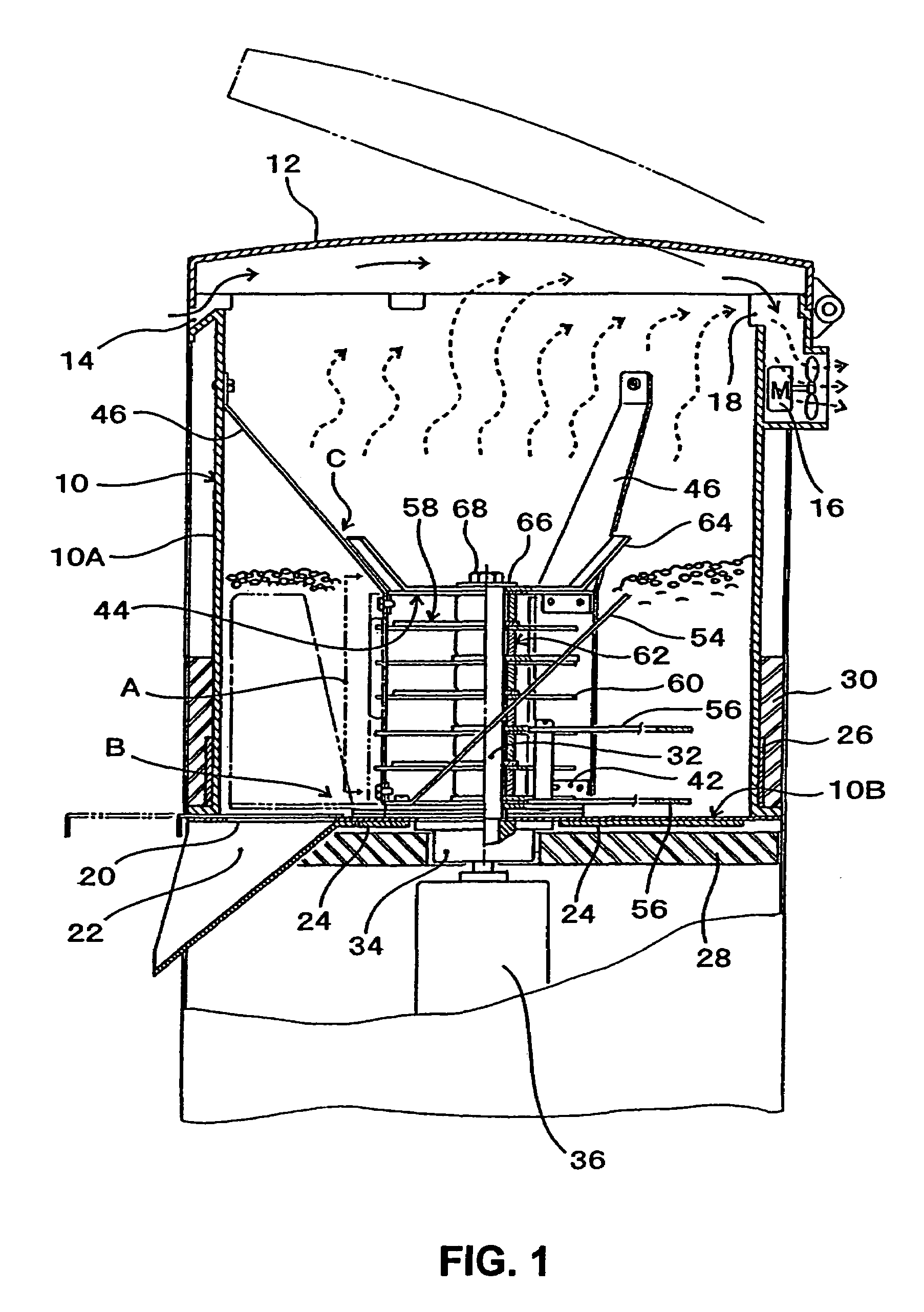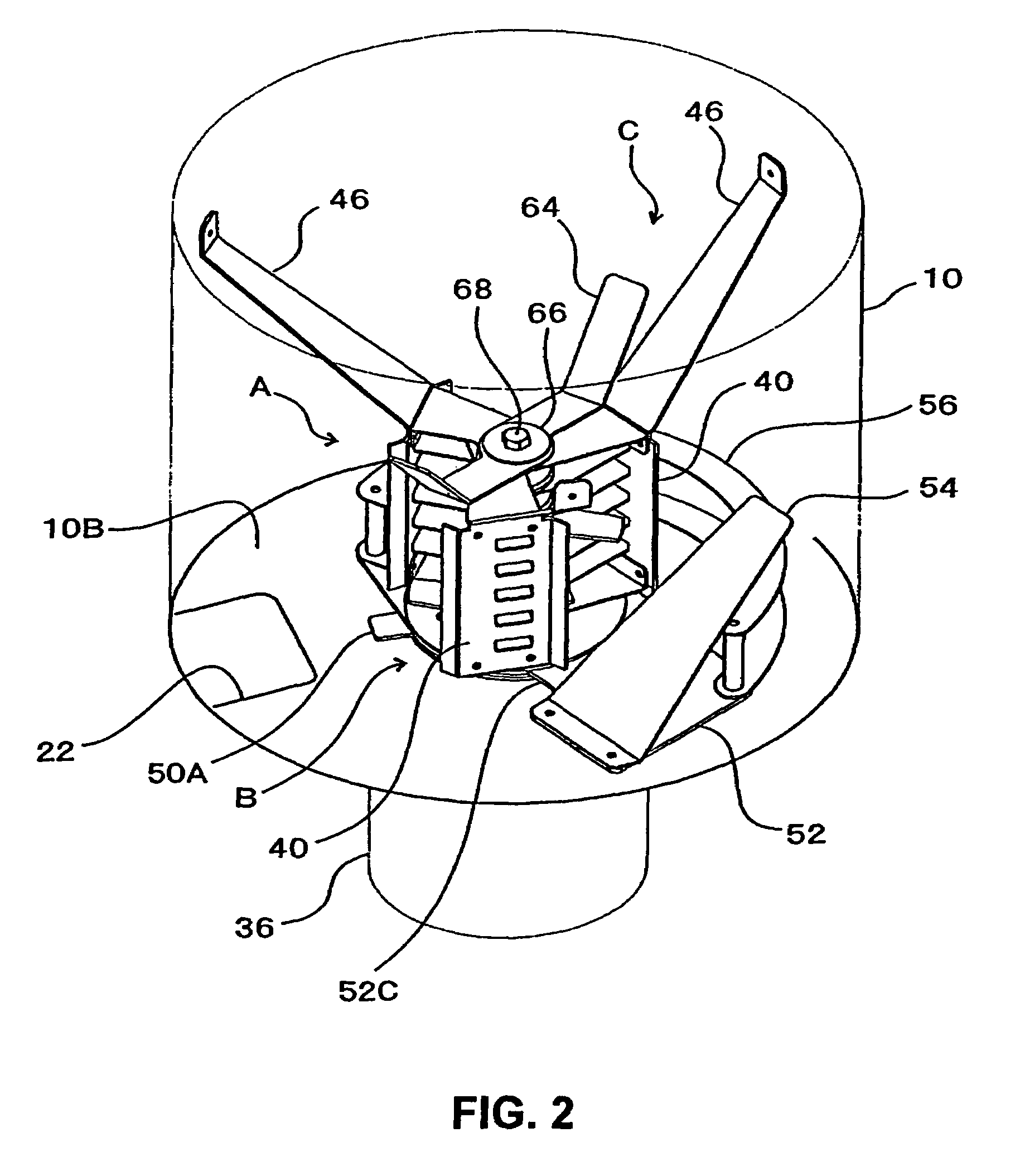Raw garbage treatment apparatus and a cutter thereof
a garbage treatment and cutter technology, applied in the direction of gas current separation, lighting and heating apparatus, grain husking, etc., can solve the problems of complex structure of the apparatus, large slow and natural degradation of organic matter, so as to achieve the effect of less fluctuation in the treatment efficiency of the garbage, escaping raw garbage, and reducing the amount of raw materials
- Summary
- Abstract
- Description
- Claims
- Application Information
AI Technical Summary
Benefits of technology
Problems solved by technology
Method used
Image
Examples
Embodiment Construction
[0059]In FIGS. 1, 2 and 5, the reference numeral 10 indicates a cylindrical treatment tank which has a closed bottom. In the shown treatment tank, the bottom of the cylindrical section 10A is closed off by a bottom plate 10B, and a cover plate 12 is attached to the opening which is in the upper end portion of the cylindrical section 10A so that the cover plate 12 is opened and closed. The bottom plate 10B is made of a metal that is superior in terms of thermal conductivity, such as a stainless steel plate, etc. It is desirable that the cylindrical section 10A also be made of a similar material to that of the bottom plate 10B.
[0060]An intake opening 14 that admits outside air is provided in the upper portion of the treatment tank 10, and so are the exhaust fan 16 and exhaust passage 18 which are used to exhaust the vapor generated from the raw garbage. The draft of the exhaust fan 16 is set so that the vapor from the raw garbage does not condense inside the treatment tank 10. A catal...
PUM
 Login to View More
Login to View More Abstract
Description
Claims
Application Information
 Login to View More
Login to View More - R&D
- Intellectual Property
- Life Sciences
- Materials
- Tech Scout
- Unparalleled Data Quality
- Higher Quality Content
- 60% Fewer Hallucinations
Browse by: Latest US Patents, China's latest patents, Technical Efficacy Thesaurus, Application Domain, Technology Topic, Popular Technical Reports.
© 2025 PatSnap. All rights reserved.Legal|Privacy policy|Modern Slavery Act Transparency Statement|Sitemap|About US| Contact US: help@patsnap.com



